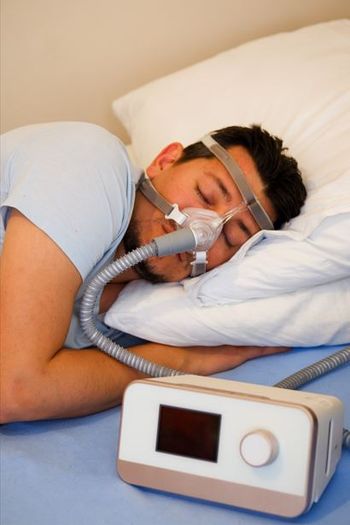
Induced Labor Doubles Risk of Rare Pregnancy Complication
MONTREAL -- Induced labor is associated with a doubling in risk of amniotic-fluid embolism, a serious but rare complication of pregnancy, according to researchers here.
MONTREAL, Oct. 20 -- Amniotic-fluid embolism is a serious but rare complication of pregnancy, although the risk appears to double when labor is induced, according to researchers here.
In cases where the mother died from the embolism, which occurred in 24 of 180 total singleton deliveries out of three million, the women were 3.5 times more likely to have had induced labor than they were to have spontaneous labor, reported Michael S. Kramer, M.D., of Montreal Children's Hospital, and colleagues, in the Oct. 21 issue of The Lancet.
"Although the absolute excess risk is low, women and physicians should be aware of this risk when making decisions about elective labor induction," they wrote.
Other risk factors for amniotic fluid embolism were multiple pregnancy, older maternal age (35 or older), caesarean delivery or instrument-assisted vaginal delivery, eclampsia, polyhydramnios, placental abruption, placenta previa, cervical laceration, uterine rupture, and fetal distress, the authors found.
The overall rate of the complication was 14.8 per 100,000 multiple-birth deliveries, and 6.0 per 100,000 singleton deliveries.
"Kramer and colleagues' study is important for the people who will be affected by this rare but deadly disease," wrote Jason Moore, M.D, assistant professor of critical care medicine at the University of Pittsburgh, in an accompanying editorial.
"The researchers have identified definitively the association of medical induction of labor with amniotic fluid embolism, and delineated the small but important effect this association can have on future obstetric patients," wrote Dr. Moore. "They have also strengthened the evidence for the association of the disorder with other risk factors for which data were previously inconsistent."
Dr. Kramer and colleagues looked at the records on 3,018,781 deliveries, representing about 70% of all obstetric deliveries in Canada for the fiscal years 1991 through 2002. Of that total, 2,984,977 were singleton births, and 33,804 were multiple.
With total rate of amniotic-fluid embolism at 14.8 per 100,000 multiple-birth deliveries, and at 6.0 per 100 000 singleton deliveries, the odds ratio for an embolism occurring in a multiple birth vs. singleton delivery was 2.5 (95% confidence interval, 0.9-6.2).
Because of the huge difference in numbers between singleton and multiple pregnancies, the authors restricted the remainder of the analyses to singleton births, and found that there were at total of 180 cases out of the nearly 3 million singleton deliveries. Of those 180 cases, 24 (13%) were fatal.
There was no significant time-related increase or decrease in occurrence of amniotic-fluid embolism for total or fatal cases, the investigators wrote.
There was a nearly two-fold risk for amniotic-fluid embolism associated with medical induction of labor (adjusted odds ratio 1.8, 95% CI, 1.3-2.7) and the association was stronger for fatal cases (crude odds ratio 3.5, 95% CI.5-8.4).
The adjusted odds ratio for embolism in cephalic/caesarean deliveries compared with cephalic presentation and vaginal delivery was 12.5 (95% CI, 7.9-19.9).
For eclampsia, the adjusted odds ratio was 11.5 (95% CI, 2.8-46.9), and for polyhydramnios the ratio was 3.0 (95% CI, 1.2-7.3).
Other risk factors were multiple pregnancy, older maternal age, placental complications, cervical laceration, uterine rupture, and fetal distress, the authors found.
"Many of the significant risk factors recorded in this study are consistent with the presumed causal roles of strong uterine contractions, excess amniotic fluid, and disruption of the uterine vasculature," they wrote. "These mechanisms probably explain the increased risks seen with multiple pregnancy, polyhydramnios, placenta previa or abruption, and cervical laceration or uterine rupture, and might explain a small part of the strong association with caesarean delivery. Labor induction could operate via a similar mechanism."
They noted that although the absolute risk for the complication is quite small, the information about the increased risk should be factored in when women and their obstetricians are considering elective induced labor.
"With four million births per year and induction rates approaching 20% in the U.S., this practice could be causing amniotic-fluid embolism in 30 to 40 women per year in the U.S. alone (including 10 to 15 deaths, because of the increased odds ratio for fatal cases)," the investigators noted.
Dr. Moore pointed out that the greater association with fatal cases was important.
"The absence of a gold-standard for diagnosis is an unavoidable source of error in epidemiological studies of amniotic fluid embolism," he said. "As the researchers suggest, non-fatal amniotic fluid embolism might have been overdiagnosed in their study. Moreover, fatal cases of the disorder are less likely to be misdiagnosed."
"Thus", he added, "the association between amniotic fluid embolism and a given risk factor is most reliable when a death is recorded. The odds ratio for induced labor as a risk factor is higher for deaths alone than for total cases of the disorder, which lends support to the argument for this association."
Newsletter
Enhance your clinical practice with the Patient Care newsletter, offering the latest evidence-based guidelines, diagnostic insights, and treatment strategies for primary care physicians.





















































































































































































































































































